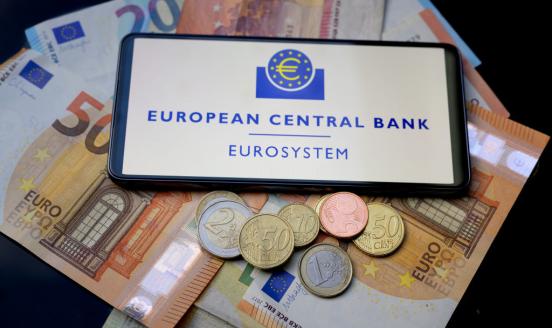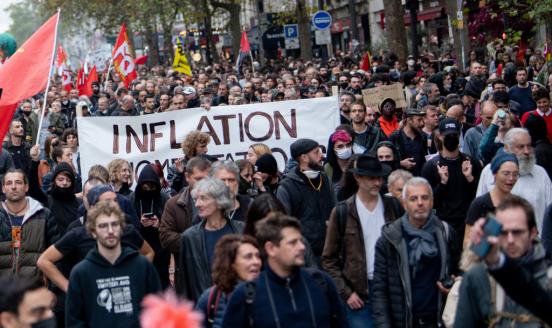The evolution of the ECB governing council's decision-making
Before it is decided who will chair the governing council for the next eight years, the authors look back and examine precisely how decisions have bee
Given the peculiar multi-country nature of the Eurosystem, taking monetary policy decisions by unanimity, or at least by consensus, was considered a priority by the founder members of the governing council of the ECB to ensure that the new central bank would be seen as speaking with one ‘supra-national’ voice.
That is why ECB President Duisenberg declared in July 2002 that “the Governing Council's decisions are decisions by a collegiate body and that every individual member of that body will defend and describe the outcome of certain discussions as if he had been 100% enthusiastic about those decisions. They will be supported by the entire Governing Council.”
During his appointment procedure in September 2003, asked by the members of the European Parliament about the objectives that he would pursue during his mandate as president of the ECB, Jean-Claude Trichet also identified “collegial decision-making” as one of the three essential principles that would guide his presidency, and added that “the President is the head of a team, and not a single player. The Executive Board is a team. The governing council is a team. And the success of the ECB, and that of the Eurosystem, can only be achieved through teamwork”.
However, faced with critical crises and major challenges in the second decade of its existence, the ECB’s governing council, and its president, recognised that reaching unanimity or even a consensus on every decision was not the utmost priority (and was probably too difficult to achieve given the circumstances) and that decisions could be taken by simple majority if needed.
This highlighted the important trade-off between having all, or at least most, of the members of the governing council on board when taking decisions – in order to be able to speak with one voice (and also in fine to avoid creating tensions between member states and resentment towards the ECB) – and making timely optimal decisions for the euro area as a whole.
The next president of the ECB, like his predecessors before him, will have the difficult task of dealing with that key trade-off and finding the right balance between these two concerns. Before the choice on who will chair the governing council during the next eight years is made, it is thus interesting to look back and examine precisely how decisions have been taken since the ECB was created. This is what we investigate in this blog post.
The main obstacle we face is that, in terms of reporting on decision-making, the ECB is less transparent than, for instance, the Bank of England or the US Federal Reserve. Both the BoE and the Fed publish minutes and votes after respective meetings of the Monetary Policy Committee and the Federal Open Market Committee, while the ECB publishes neither detailed minutes nor votes.
The reason behind this is that, since its creation, the ECB has been afraid that, if votes or discussions were public, there could be political pressure on members of the governing council in their respective countries – especially if there were a conflict between a country’s immediate economic interest and that of the euro area as a whole – and that this would reduce the independence of governing council members. That is why President Duisenberg declared in September 2003 that “those who vote and whose votes could be identified and recognised would come under pressure from their national governments or parliaments to vote differently in future, for purely national reasons and considerations. One of the Governing Council's greatest assets is that it has always taken a euro-area-wide point of view, and I would hate to lose that”.
However, despite the absence of votes or precise minutes, we can rely on other sources to gather information on how decisions have been taken in the governing council. This includes: 1) the press releases and the transcripts of the press conferences following the governing council ‘monetary policy’ meetings,[1] during which decisions are explained in detail by the president and the vice-president, and which also contains the transcripts of the ensuing Q&A sessions with journalists, 2) the transcripts of the monetary dialogue with the European Parliament, 3) the letters sent by the ECB president to reply to the questions of members of the European Parliament and 4) since 2015, the ‘accounts’, i.e. the summaries of the discussion of the monetary policy meetings published by the ECB. Exceptionally, press releases have also been published when decisions were taken outside of regular meetings and thus were not announced or explained in a press conference.
We use these different sources, as extensively as possible[2], to build a comprehensive database of how decisions have been taken since the ECB’s creation. It includes all 330 monetary policy decisions taken by the governing council from December 1998 – when they set the starting level of the key ECB interest rates and the reference value for monetary growth – to June 2019. Overall, the information collected comes mainly from the Q&A section of the press conference transcripts, during which journalists often ask questions related to the discussion and the decision-making process.
There are two types of decisions: 1) the decisions on the level of the interest rates, and 2) all other monetary policy decisions. Every decision listed in our dataset is matched with the information of how the decision was reached, if available.
In order to classify decisions from this perspective[3], we follow President Trichet and use the three following categories: unanimity, consensus or majority. Indeed, contrarily to his predecessor President Duisenberg who, when asked, would in general be reluctant to answer questions on voting[4], and, if anything, only mentioned that a consensus was reached, President Trichet stated in April 2011 that: “We don’t necessarily wait for consensus when taking our decisions […] We can decide by majority decision, we can decide by consensus and we can decide unanimously. These are the three categories.”
Compared to unanimity and majority, consensus is a blurrier concept. This is why Duisenberg specified in July 2002 that “deciding by consensus means that the conclusions reached by the Governing Council as a whole on a certain decision, in a certain direction, or to decide not to change anything, are supported by the entire Governing Council, by some more enthusiastically than others, but this does not require a vote”. And in January 2015, President Draghi explained what constituted for him a consensual decision: “Consensus means that everybody could either agree or not object” on a proposal[5]. These two definitions might differ very slightly but, in our database, we do not distinguish them and instead group together all decisions described as consensual.
The main results of our new database can be easily visualised with the two following charts.
Figure 1 shows the 266 decisions concerning the levels of the three ECB key interest rates (marginal lending facility rate, main refinancing operation rate, and deposit facility rate) from 1998 to 2019 and how the decisions were taken, when the information is available.
Figure 2 shows how all the other 64 monetary policy decisions were taken by the governing council, split into four categories: credit operations, collateral eligibility, asset purchase, forward guidance and other.
Figure 1. Interest rate decisions
Source: Bruegel based on ECB
Figure 2. Decisions on other measures
Source: Bruegel based on ECB. Notes: 1 “too many measures to be unanimous on all of them” 08/12/2011; 2 "Unanimity in intent, but differences of view when it comes to deciding exactly what measures to undertake" 04/09/2014; 3 "Unanimity on APP being a monetary policy tool, majority on the timing" 22/01/2015; 4 “Majority for the package” 03/12/2015; 5 “Majority on the open-endedness” 26/10/2017
The most important result is that our database confirms our initial hypothesis that decision-making has significantly evolved over time, and also depends on who the sitting president is.
First, concerning the transparency of the decision-making, after the fairly opaque Duisenberg era, Trichet was generally very transparent on how decisions were taken in the governing council (at least as far as indicating which of his three categories was concerned). For his part, Draghi sometimes avoided answering questions on this issue, especially regarding the setting of interest rates.[6] However, when any major – or unconventional – decision was taken, he would generally provide information on the way decisions were made.
Second, on how decisions were effectively taken, our database confirms that, after the start of the financial crisis, the search for unanimity or consensus was not the overwhelming priority of the ECB president and of the governing council anymore, as majority-based decisions became more frequent.
Actually, the only time when a majority decision was mentioned before the crisis was in June 2006 when some members of the governing council would have preferred a 50 basis-points rate increase to a 25 basis-points increase. But even then, Trichet outlined later in the press conference that “all [Governing Council’s] decisions are collegial decisions”. The next majority decisions only came four years later, in May 2010, when the ECB introduced the Securities Market Programme and when the governing council decided to maintain the eligibility of Greek bonds as collateral (despite their rating being below the ECB threshold after Greece had agreed an adjustment programme with the Troika).
The number of decisions taken by majority increased further under Draghi’s presidency, reaching a total of 18 – some 15% of all the decisions taken under his watch. This number might not appear very large, but it is because it includes all the decisions to keep rates unchanged. If we exclude these decisions which are generally less controversial, the percentage of majority decisions increases to 32%, and goes up to 56% if we focus on rate changes only.
It is difficult to say with certainty what the main driver behind this increasing trend has been, but we see four main explanations. This could reflect the heterogeneous preferences in terms of decision-making from the different presidents, as some might have prioritised achieving a consensus more than others. However, this reason should not be overemphasised. First, this might be due to the fact that reaching a consensus is less necessary now that the ECB has established itself firmly as one of the most important central banks in the world. Second, this also probably results from the fact that the measures implemented by the ECB have become more and more unconventional and difficult to accept from some members. Our database certainly shows that majority-based decisions were needed for most decisions concerning asset purchases, negative rates, Targeted longer-term refinancing operations (TLTROs), etc. And, finally, this trend probably also reflects the willingness of the ECB “to decide extremely rapidly” during the crisis, as Trichet noted in April 2011.
Another interesting observation appearing in our database is that, as Figure 3 shows, it has been easier to reach a consensus or unanimity in the governing council for tightening decisions than for easing ones. This is probably due to the fact that many easing decisions taken since the financial crisis were considered as unconventional and that some members where not comfortable with them. But it could also suggest that some members of the governing council have a strong and enduring hawkish bias, and that they are ready to dissent to easing decisions, while more dovish members might accept joining the majority more willingly to reach a consensus when there is a need to tighten monetary policy (actually, in the only two tightening decisions that had to be taken by majority, the dissenters were not against the tightening but, on the contrary, favoured more tightening[7]).
Figure 3. Decisions sorted between easing and tightening
Sources: Bruegel based on ECB
Finally, we want to highlight the low level of transparency, clearly visible in Figure 2, for the decisions concerning the eligibility criteria and haircuts applied to assets to be used as collateral in the refinancing operations of the ECB. We only know how the decision was taken for two of the 17 changes to the collateral framework. Given the importance of these sometimes-controversial decisions (as discussed in a previous blog post), we believe that the ECB should be more transparent (and journalists and MEPs should ask more questions) on how these decisions are taken, in particular when it concerns the sovereign bonds of euro-area
In conclusion, coming back to the current discussion about the next president of the ECB and what role he should play as the chair of the governing council, we believe that it will important for him to try as much as possible to limit disagreements, so that the council’s decisions are not undermined by dissenting members and that resentment does not appear between member states or towards the ECB (which could happen if a member was outvoted all the time). However, we also consider that the next ECB president should not try to reach unanimity or consensus at all costs, as this could lead to decisions too timid or too late that could be damaging for the euro-area economy.
Indeed, episodes in which monetary policy is constrained by the effective lower bound might be more frequent and longer in the future (as a result of a significant fall in the neutral rate). This implies that the ECB will need to rely more heavily and more frequently on so-called unconventional policies. Trying to reach unanimity or even a consensus each time these instruments need to be used could delay their implementation and could thus lead to permanent suboptimal monetary policymaking in the euro area.
[1] Even though the governing council usually meets more often, the assessment of economic and monetary developments and monetary policy decisions currently only take place every six weeks (around every 4 weeks before 2015). This includes setting the ECB key interest rates, and in recent years the so-called ‘non-standard’ or ‘unconventional’ monetary policy measures. At the other meetings, the governing council takes decisions related to other tasks, such as the payment system or legal affairs. Since November 2001, regular press releases have only been published, and press conferences have only been held, after the ‘monetary policy’ meetings.
[2] Readers that might have gathered additional information on the ECB’s decision-making from other sources (e.g. interviews, speeches) are welcome to send us an email (at [email protected]) to help us improve our database.
[3] In practice, the categorization of decisions was done through a search for relevant key words in source documents and a qualitative analysis of the surrounding paragraphs.
[4] See for instance the Q&A session from the press conference of February 2001.
[5] On that occasion, President Draghi also introduced an additional category stating that a “large majority means that a lot of people agreed and a few people objected”. But given that this category has not been used systematically in other press conferences, we decided not to consider separately.
[6] See for instance the Q&A session from the press conference of January 2014
[7] The only rate hike decided by majority was because some members wanted a higher rate hike (as discussed before), while the members that dissented to the reduction of asset purchases from 80 to 60 billion dissented not because they were against scaling down the APP programme, but because they wanted the scale-down of the APP to be faster, as the accounts of this meeting show.



